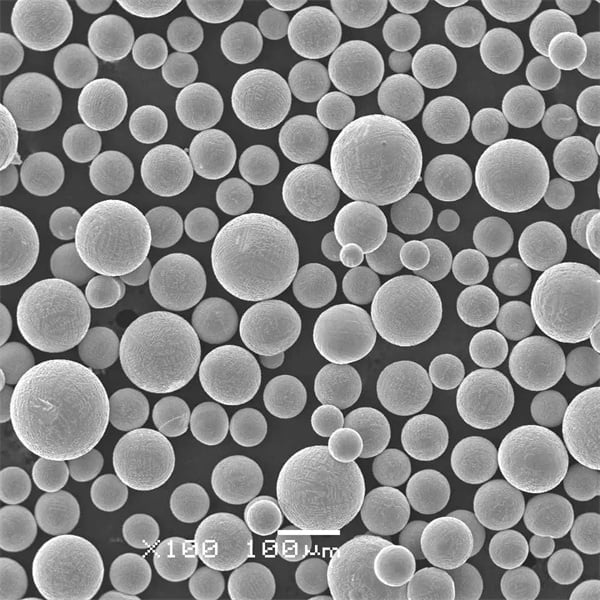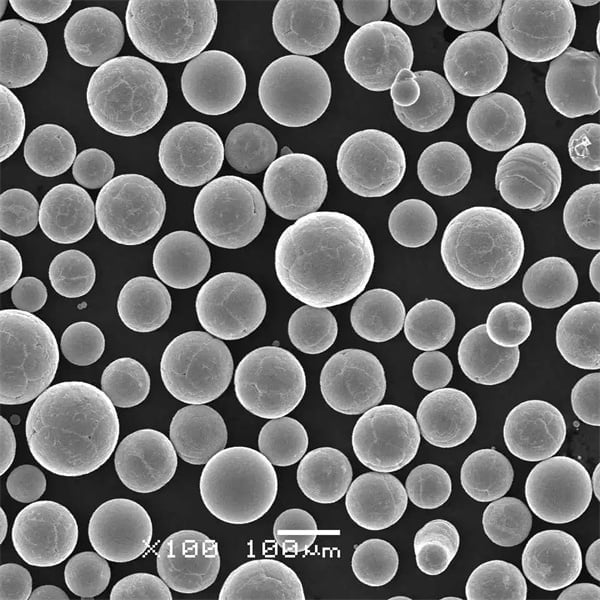Overview of High Density Tungsten Powder
High Density Tungsten Powder is a unique material known for its exceptional properties, making it highly valuable in various industrial and scientific applications. This comprehensive guide dives deep into the specifics of High Density Tungsten Powder, examining its types, compositions, properties, and applications, along with supplier details, pricing, and much more.
What is High Density Tungsten Powder?
High Density Tungsten Powder, primarily composed of tungsten (W), boasts remarkable density and other desirable properties such as high melting point, strength, and corrosion resistance. It is produced through various processes, including atomization, chemical reduction, and mechanical alloying, to achieve powders with distinct characteristics suitable for specialized applications.

Types and Models of High Density Tungsten Powder
There are numerous types of High Density Tungsten Powder, each tailored for specific uses. Here are some of the prominent models:
1. W-1 Tungsten Powder
W-1 Tungsten Powder is characterized by its high purity and fine particle size, typically used in the electronics industry for high-precision components.
2. W-2 Tungsten Powder
W-2 Tungsten Powder has slightly larger particles and is often utilized in heavy-duty industrial applications due to its excellent wear resistance.
3. WC-Co (Tungsten Carbide-Cobalt) Powder
WC-Co Powder combines tungsten carbide with cobalt, offering a balance of hardness and toughness ideal for cutting tools and wear-resistant parts.
4. W-10Ni (Tungsten-Nickel) Powder
W-10Ni Powder includes 10% nickel, enhancing its ductility and machinability, commonly used in aerospace and defense sectors.
5. W-5Cu (Tungsten-Copper) Powder
W-5Cu Powder, containing 5% copper, is known for its excellent electrical conductivity and is used in electrical contacts and heat sinks.
6. W-3Re (Tungsten-Rhenium) Powder
W-3Re Powder includes 3% rhenium, providing superior high-temperature strength and stability, perfect for high-temperature applications like thermocouples.
7. W-8Mo (Tungsten-Molybdenum) Powder
W-8Mo Powder, with 8% molybdenum, offers enhanced corrosion resistance and is utilized in chemical processing industries.
8. Tungsten Alloy Powders
Tungsten Alloy Powders consist of mixtures of tungsten with other metals like iron, nickel, and copper, used in various high-density applications.
9. Nano Tungsten Powder
Nano Tungsten Powder features extremely fine particles on the nanometer scale, used in advanced research and applications requiring high surface area.
10. Tungsten Heavy Alloy Powder
Tungsten Heavy Alloy Powder is a mix of tungsten and various binders, offering high density and strength for use in counterweights, radiation shielding, and ballistic applications.
Properties of High Density Tungsten Powder
| Type of Tungsten Powder | องค์ประกอบ | Density (g/cm³) | Melting Point (°C) | ลักษณะเฉพาะ | แอปพลิเคชัน |
|---|---|---|---|---|---|
| W-1 | Pure W | 19.25 | 3422 | High purity, fine particle size | Electronics, precision components |
| W-2 | Pure W | 19.25 | 3422 | Wear resistance, larger particles | Industrial, heavy-duty applications |
| WC-Co | W, Co | 15.6 | 2785 | Hardness, toughness | Cutting tools, wear parts |
| W-10Ni | W, Ni | 18.5 | 2700 | Ductility, machinability | Aerospace, defense |
| W-5Cu | W, Cu | 17.0 | 3200 | Electrical conductivity | Electrical contacts, heat sinks |
| W-3Re | W, Re | 19.0 | 3000 | High-temp strength, stability | Thermocouples, high-temp applications |
| W-8Mo | W, Mo | 18.0 | 2623 | ความต้านทานการกัดกร่อน | กระบวนการทางเคมี |
| Tungsten Alloy | W, Fe/Ni/Cu | 16.0-18.0 | 2700-3000 | Varies by composition | High-density applications |
| Nano Tungsten | Pure W | 19.25 | 3422 | High surface area | Advanced research |
| Tungsten Heavy Alloy | W, Binders | 17.0-18.5 | 3000 | High density, strength | Counterweights, radiation shielding |
Applications of High Density Tungsten Powder
| แอปพลิเคชัน | คำอธิบาย |
|---|---|
| เครื่องใช้ไฟฟ้า | Used in semiconductors, contacts, and high-precision electronic components. |
| อุตสาหกรรม | Utilized in heavy machinery parts, tools, and wear-resistant applications. |
| Aerospace and Defense | Employed in high-performance components, projectiles, and armaments. |
| แพทย์ | Used in radiation shielding and medical imaging devices. |
| เครื่องไฟฟ้า | Applied in electrical contacts, heat sinks, and conductors. |
| กระบวนการทางเคมี | Used for equipment exposed to corrosive environments. |
| Research and Development | Nano Tungsten Powder is used in advanced material research and nanotechnology. |
| การก่อสร้าง | Utilized in construction equipment and drilling tools. |






Specifications, Sizes, Grades, and Standards
| สเปก | Size Range (µm) | เกรด | มาตรฐาน |
|---|---|---|---|
| W-1 | 0.5-10 | High Purity | ASTM B777 |
| W-2 | 1-15 | มาตรฐาน | ISO 9001 |
| WC-Co | 0.5-12 | Premium | ASTM B777, ISO |
| W-10Ni | 1-20 | High Grade | ASTM B777 |
| W-5Cu | 0.5-25 | อุตสาหกรรม | ISO 9001 |
| W-3Re | 0.5-5 | High Temp | ASTM B777 |
| W-8Mo | 0.5-15 | Corrosion | ISO 9001 |
| Tungsten Alloy | 1-30 | Various | ASTM B777, ISO |
| Nano Tungsten | <0.1 | Research | Custom Standards |
| Tungsten Heavy Alloy | 0.5-20 | Military | MIL-STD-810 |
Suppliers and Pricing Details
| ซัพพลายเออร์ | ประเภทสินค้า | Price (per kg) | Contact Info |
|---|---|---|---|
| Tungsten Corp | W-1, W-2 | $200 – $250 | www.tungstencorp.com |
| Metal Powders Inc. | WC-Co, W-10Ni, W-5Cu | $150 – $300 | www.metalpowdersinc.com |
| Advanced Materials | Nano Tungsten | $500 – $1000 | www.advancedmaterials.com |
| Industrial Metals | Tungsten Heavy Alloy | $180 – $350 | www.industrialmetals.com |
| Specialty Alloys | W-3Re, W-8Mo | $250 – $400 | www.specialtyalloys.com |
Comparing Pros and Cons of High Density Tungsten Powder
| Type | ข้อได้เปรียบ | ข้อเสีย |
|---|---|---|
| W-1 | High purity, precision applications | Expensive |
| W-2 | Wear resistance, durability | Limited to industrial use |
| WC-Co | Hardness, toughness | Higher cost due to cobalt |
| W-10Ni | Ductility, machinability | Lower density compared to pure tungsten |
| W-5Cu | Electrical conductivity | Less suitable for high-temp applications |
| W-3Re | High-temp stability | Expensive due to rhenium |
| W-8Mo | ความต้านทานการกัดกร่อน | Specialized use |
| Tungsten Alloy | Versatile, high-density applications | Composition varies, performance may differ |
| Nano Tungsten | High surface area, advanced research | Very high cost |
| Tungsten Heavy Alloy | Strength, radiation shielding | Heavier, may require special handling |
Advantages of High Density Tungsten Powder
High Density Tungsten Powder offers several advantages:
1. Superior Density and Strength
Tungsten’s density is nearly twice that of lead, making it ideal for applications requiring high mass in a small volume. Its high strength ensures durability and resistance to wear and tear.
2. Excellent Temperature Resistance
With a melting point of 3422°C, tungsten can withstand extremely high temperatures, making it suitable for applications like aerospace components and high-temperature furnaces.
3. Corrosion Resistance
Tungsten’s resistance to corrosion by most acids and alkalis enhances its longevity in harsh environments, particularly in chemical processing industries.
4. Electrical Conductivity
Tungsten-copper alloys combine the high thermal and electrical conductivity of copper with tungsten’s robustness, perfect for electrical contacts and heat sinks.
Disadvantages of High Density Tung
sten Powder
Despite its numerous benefits, High Density Tungsten Powder has some drawbacks:
1. High Cost
The production and refinement of tungsten are costly, making it more expensive compared to other metals like steel or aluminum.
2. Brittleness
Pure tungsten can be brittle, which may limit its use in applications requiring high ductility or impact resistance. Alloying it with other metals can mitigate this issue to some extent.
3. Difficulty in Machining
Due to its hardness, tungsten can be challenging to machine, requiring specialized equipment and techniques, which can increase manufacturing costs.

คำถามที่พบบ่อย
| Question | Answer |
|---|---|
| What is High Density Tungsten Powder? | High Density Tungsten Powder is a material known for its high density, strength, and heat resistance, used in various industrial and scientific applications. |
| What are the common applications of High Density Tungsten Powder? | Common applications include electronics, aerospace, defense, medical devices, and industrial machinery. |
| How is High Density Tungsten Powder produced? | It is produced through processes like atomization, chemical reduction, and mechanical alloying. |
| Why is tungsten used in high-temperature applications? | Tungsten’s high melting point (3422°C) and stability at elevated temperatures make it ideal for such applications. |
| What are the main advantages of tungsten-copper alloys? | Tungsten-copper alloys offer a combination of high thermal and electrical conductivity with the strength of tungsten. |
| Are there any health risks associated with tungsten powder? | Tungsten powder is generally considered safe, but inhalation of fine dust should be avoided as it can cause respiratory issues. |
| How does the cost of tungsten compare to other metals? | Tungsten is more expensive than common metals like steel and aluminum due to its complex production process and high raw material costs. |
| Can tungsten powder be used in 3D printing? | Yes, tungsten powder can be used in additive manufacturing, particularly for creating high-density, high-strength components. |
| What is the difference between tungsten and tungsten carbide? | Tungsten carbide is a compound of tungsten and carbon, known for its extreme hardness and used in cutting tools and wear-resistant parts. |
| What industries benefit the most from tungsten powder? | Industries such as aerospace, defense, electronics, and medical sectors benefit significantly from the unique properties of tungsten powder. |
บทสรุป
High Density Tungsten Powder is an exceptional material with a wide range of applications due to its high density, strength, and resistance to extreme conditions. Whether in industrial machinery, aerospace components, or cutting-edge electronics, tungsten powder’s versatility and performance are unparalleled. Understanding the various types, properties, and uses can help industries and researchers harness its full potential, driving innovation and efficiency in their respective fields.
About 3DP mETAL
Product Category
ติดต่อเรา
มีคำถามอะไรไหม? ส่งข้อความมาเดี๋ยวนี้! หลังจากที่ได้รับข้อความแล้ว เราจะประมวลผลคำขอของคุณพร้อมทีมงานทั้งหมด
